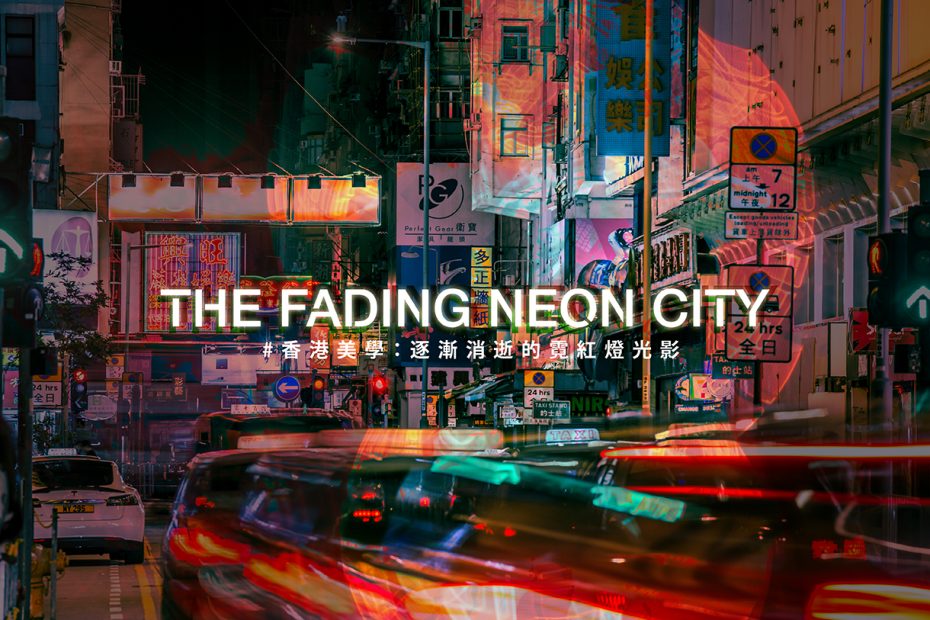The night view of Hong Kong is beautiful, which is an eternal admiration from the outside world. The colorful lights reflect the night sky, in addition to the lights of the houses, the neon lights full of modern feelings on the streets are also an important symbol of Hong Kong. Neon, formally known as “neon,” was discovered by British chemists William Ramsay and Morris W. Travers in 1898, and officially invented as neon gas tubes by French chemist George Claude in 1910, also known as neon lights. For Hong Kong people, perhaps the most profound impression brought by neon lights is the scenes in “City on Fire,” “In the Mood for Love,” and “Chungking Express,” carrying the collective memories of Hong Kong people.
The world of light and shadow, the brilliant era
In the 1930s, neon lights penetrated the East, but Hong Kong only caught up in the 1950s. With the unique planning formed by Hong Kong’s narrow urban space, neon signs bring a bewildering illusion to the city. The 80s, 90s were the most brilliant era for neon signs, from restaurants, department stores to bars, hair salons, various industries used neon signs as a lure, lining the streets. Traditional restaurants, banks, cigarette ads, nightclubs, pawn shops’ large fluorescent tubes flash in the night sky, replacing the stars, becoming the city’s light.


Nathan Road or Lockhart Road, bustling with people during the day, witnessing the busy lives of urbanites rushing around; however, at night, transformed into a sleepless city by the timely illumination of neon lights, as if instantly transported to another space. Whether it’s the traditional red and green that has remained unchanged for decades, or the colorful neon lights that have witnessed countless joyous occasions, stepping inside will inevitably be drawn into this glamorous and vibrant neon world. In an era before designers became popular, industries and advertising products were the symbols of each neon sign, with simple and direct meanings, emitting not just red, green, and blue, but also white, yellow, and pink, yet never losing their dynamism and emotion. Because of this direct and concrete expression, many movies and songs have become enamored, using the essence and characteristics of neon to create an atmosphere, gradually revealing the narrative qualities that neon lights possess in this city, something that was previously unnoticed.

Neon lights make Hong Kong lively, illuminating our nights and also shining a light on Hong Kong culture.
Is it the passing of time, or the disappearance of craftsmanship?


Master Hu Zhikai, who has 30 years of experience in making neon lights, is one of the few remaining neon light masters in Hong Kong. Following in his father’s footsteps in this industry, he has been making neon signs of all sizes since he was 16 or 17 years old. Whether it’s large or small neon signs, the characters and designs are all made by the master’s hands. He first bends the glass into shape, then evacuates the air from the tube and fills it with neon gas, and finally electrifies it to release various colors. Even though the process is repeated each time, it still requires skill and patience. Developing a deep connection with his work and neon lights, he has honed his professional skills. Who would have thought that there would come a time when it would all come to an end? “During times of transition, many things are not solely up to you to decide, especially when you are faced with something that has a history of over a hundred years. Being replaced is just a matter of time,” Master Hu sighed helplessly at the decline of neon lights.


Stunning and certain, reaching the peak and then lamenting, even neon lights made of chemical gases, after years of wind and rain, cannot escape the fate of aging, let alone people? With the rise of LED lights, Hong Kong nurtured over a hundred neon light masters during its peak period. However, after more than thirty years, only a few remain. From Master Hu, it was revealed that if not for the pandemic of the century in 2020, Japan and even some distant European regions planned to start in-depth guided tours from this year, secretly learning from Master Hu to understand this craft; even the increasingly mature LED light effects have recently sparked the idea of completely imitating neon light tubes, which sounds both ironic and interesting. Perhaps this is the will of the heavens, as the guided tours were ultimately put on hold, and all that can be done is to wait. You may ask, why not pass on to the next generation, train a few talented disciples, and continue the neon craft? “Soldering, inflating, then powering up, with practice, the art becomes natural. But when you’re doing the same process every day within four walls, that feeling is indescribable. How many people are willing to experience that, right?”

Neon lights fill the sky, this scene is no longer here, having passed through the bustling years, neon is now ready to retreat to the cultural stage, letting the new generation’s brilliance cover that sense of loss. How are these people, accustomed to growing up under this sensory stimulation, still adapting to this transition, still needing time to adjust to this long transition? Neon lights do not emit heat like tungsten filaments, but are they lacking in human warmth? Can new types of lighting truly replicate the nostalgic atmosphere of neon lights? It’s worth everyone’s careful consideration.
Executive Producer: Vicky Wai
Producer: Elton Ng
Director: Friendo Ng@Friendoor
Videographer: Derek Au Yueng
Photographer: Paul Ng
Lighting: Buddy But
Video Editor: Friendo Ng@Friendoor
Editor: Carson Lin
Designer: Tanna Cheng
PA: Vanessa Chu
Assistant: Gary Chan
特別鳴謝: 霓虹燈師傅胡智楷先生

